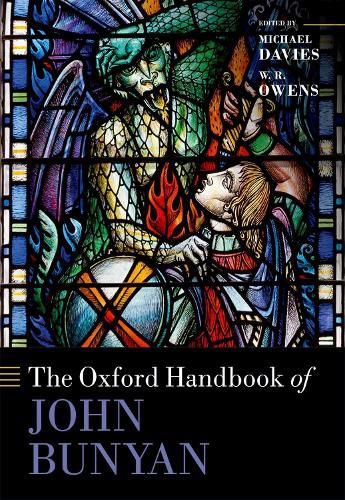Readings Newsletter
Become a Readings Member to make your shopping experience even easier.
Sign in or sign up for free!
You’re not far away from qualifying for FREE standard shipping within Australia
You’ve qualified for FREE standard shipping within Australia
The cart is loading…






The Oxford Handbook of John Bunyan is the most extensive volume of original essays ever published on the seventeenth-century Nonconformist preacher and writer, John Bunyan. Its thirty-eight chapters examine Bunyan’s life and works, their religious and historical contexts, and the critical reception of his writings, in particular his allegorical narrative, The Pilgrim’s Progress. Interdisciplinary and comprehensive, it provides unparalleled scope and expertise, ranging from literary theory to religious history and from theology to post-colonial criticism. The Handbook is structured in four sections. The first, ‘Contexts’, deals with the historical Bunyan in relation to various aspects of his life, background, and work as a Nonconformist: from basic facts of biography to the nature of his church at Bedford, his theology, and the religious and political cultures of seventeenth-century Dissent. Part 2 considers Bunyan’s literary output: from his earliest printed tracts to his posthumously published works. Offering discrete chapters on Bunyan’s major works–Grace Abounding to the Chief of Sinners (1666), The Pilgrim’s Progress, Parts I and II (1678; 1684); The Life and Death of Mr. Badman (1680), and The Holy War (1682)–this section nevertheless covers Bunyan’s oeuvre in its entirety: controversial and pastoral, narrative and poetic. Section 3, ‘Directions in Criticism’, engages with Bunyan in literary critical terms, focusing on his employment of form and language and on theoretical approaches to his writings: from psychoanalytic to post-secular criticism. Section 4, ‘Journeys’, tackles some of the ways in which Bunyan’s works, and especially The Pilgrim’s Progress, have travelled throughout the world since the late seventeenth century, assessing Bunyan’s place within key literary periods and their distinctive developments: from the eighteenth-century novel to the writing of ‘empire.
$9.00 standard shipping within Australia
FREE standard shipping within Australia for orders over $100.00
Express & International shipping calculated at checkout
The Oxford Handbook of John Bunyan is the most extensive volume of original essays ever published on the seventeenth-century Nonconformist preacher and writer, John Bunyan. Its thirty-eight chapters examine Bunyan’s life and works, their religious and historical contexts, and the critical reception of his writings, in particular his allegorical narrative, The Pilgrim’s Progress. Interdisciplinary and comprehensive, it provides unparalleled scope and expertise, ranging from literary theory to religious history and from theology to post-colonial criticism. The Handbook is structured in four sections. The first, ‘Contexts’, deals with the historical Bunyan in relation to various aspects of his life, background, and work as a Nonconformist: from basic facts of biography to the nature of his church at Bedford, his theology, and the religious and political cultures of seventeenth-century Dissent. Part 2 considers Bunyan’s literary output: from his earliest printed tracts to his posthumously published works. Offering discrete chapters on Bunyan’s major works–Grace Abounding to the Chief of Sinners (1666), The Pilgrim’s Progress, Parts I and II (1678; 1684); The Life and Death of Mr. Badman (1680), and The Holy War (1682)–this section nevertheless covers Bunyan’s oeuvre in its entirety: controversial and pastoral, narrative and poetic. Section 3, ‘Directions in Criticism’, engages with Bunyan in literary critical terms, focusing on his employment of form and language and on theoretical approaches to his writings: from psychoanalytic to post-secular criticism. Section 4, ‘Journeys’, tackles some of the ways in which Bunyan’s works, and especially The Pilgrim’s Progress, have travelled throughout the world since the late seventeenth century, assessing Bunyan’s place within key literary periods and their distinctive developments: from the eighteenth-century novel to the writing of ‘empire.